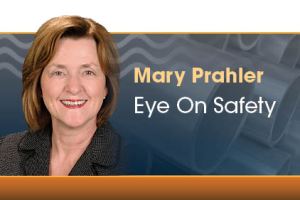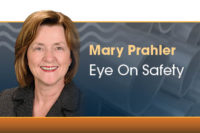
|
Section 5(a)(1) of the OSH Act, often referred to as the General Duty Clause, requires employers to “furnish to each of his employees employment and a place of employment which are free from recognized hazards that are causing or are likely to cause death or serious physical harm to his employees.”
Management must be committed to safety through a requirement of hazard assessment whenever a new process is started or new equipment is purchased. Regular machine and environmental inspections, safety training and robust safety teams with active involvement in the continuous improvement of safety within the workplace are equally important components.
Even with all these efforts, we all know accidents happen in the workplace. When an accident happens, it is an essential step in your safety program to ensure effective accident investigations are conducted, the root cause of the accident is identified and steps are taken to correct the identified root cause.
Accidents occur when hazards escape detection during the worksite analysis, when hazards are not obvious or as the result of combinations of circumstances that are difficult to foresee. A thorough accident investigation may identify previously overlooked physical, environmental, administrative or process hazards, the need for new or more extensive safety training or unsafe work practices.
All accidents or near misses should be investigated. The depth and complexity of the investigation will vary with the circumstances and seriousness of the accident or near miss. It is management’s responsibility to ensure the investigation is completed and recommendations from the investigation are implemented.
When an accident occurs, the first priority is to deal with the emergency and ensure any injury or illness receives prompt first-aid or medical attention and that any dangerous environmental factors are corrected or cordoned off so additional injuries do not occur. The accident investigation should immediately begin thereafter.
How to conduct the investigation?
Ask who, what, when, how and why. Talk with the injured employee and witnesses. Check the accident site and reconstruct the events that resulted in the accident, considering all possible causes. Take pictures of the scene. Be thorough. Small details may point to the real cause. Determine unsafe conditions or actions that separately, or in combination, were contributing factors. Ultimately, the root cause, the origin or essential core of why the accident occurred must be identified in order to effectively prevent future accidents.
Literature has identified seven factors that are the root cause of most industrial accidents. These include: inadequate training, poor enforcement of rules and regulations, failure to inspect, no written job specifications, questionable purchasing methods (i.e., purchasing the wrong equipment for the job), design problems and questionable employee selection. Do you notice that all of the root causes are areas that fall under management’s responsibilities? Management must determine what actions are essential to control or eliminate the root cause of the accident and ensure those actions are implemented.
Secondary causes of accidents also must be addressed. An ASA Toolbox Talk entitled “Attitudes and Behaviors That Cause Accidents” can be found at www.asa.net. This Toolbox Talk makes employees aware of their responsibility to help prevent accidents in the workplace by adhering to commonsense actions such as inspecting equipment and machinery prior to using, remaining attentive to the task at hand, following safety rules and established processes, and practicing good housekeeping.
Although an accident investigation may on the surface appear to be time-consuming, it will positively impact your productivity, the health and wellbeing of your employees, and in the long run, result in a better bottom line for your business.



